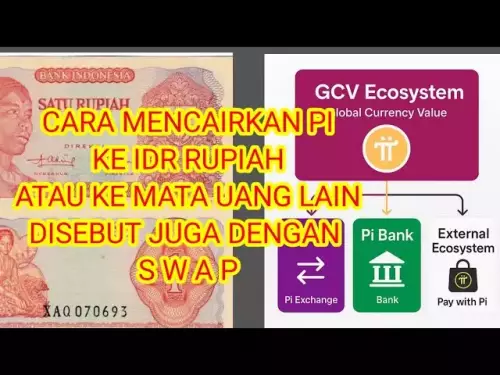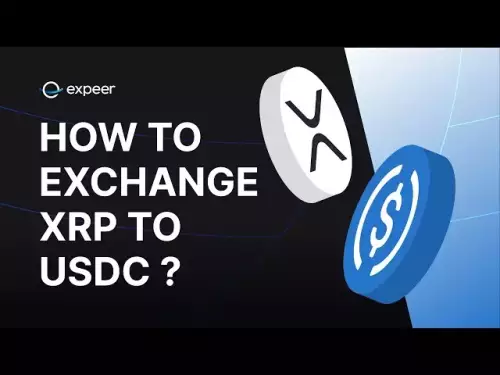-
 bitcoin
bitcoin $112715.707551 USD
-1.71% -
 ethereum
ethereum $4101.475385 USD
-3.01% -
 tether
tether $1.000644 USD
-0.02% -
 bnb
bnb $1207.619465 USD
-6.77% -
 xrp
xrp $2.501451 USD
-3.98% -
 solana
solana $202.947124 USD
-3.32% -
 usd-coin
usd-coin $1.000295 USD
0.04% -
 dogecoin
dogecoin $0.203884 USD
-4.47% -
 tron
tron $0.317154 USD
-1.72% -
 cardano
cardano $0.695009 USD
-4.43% -
 hyperliquid
hyperliquid $38.853961 USD
-8.23% -
 chainlink
chainlink $18.988674 USD
-4.64% -
 ethena-usde
ethena-usde $1.000233 USD
-0.03% -
 stellar
stellar $0.337050 USD
-3.63% -
 bitcoin-cash
bitcoin-cash $536.861728 USD
-1.28%
How to read a crypto chart?
A crypto candlestick chart shows price movements over time, with green candles indicating bullish momentum and red candles signaling downward pressure.
Aug 08, 2025 at 10:35 am

Understanding the Basics of a Crypto Chart
A crypto chart is a visual representation of the price movements of a cryptocurrency over time. These charts are essential tools for traders and investors who want to analyze market trends and make informed decisions. The most common type of chart used in cryptocurrency trading is the candlestick chart, which displays four key data points for a given time period: the opening price, closing price, highest price, and lowest price. Each candlestick represents a specific timeframe—such as one minute, one hour, or one day—depending on the chart settings. The body of the candle shows the range between the opening and closing prices, while the wicks (or shadows) extend to the high and low prices. A green candle indicates that the closing price was higher than the opening price, signaling upward momentum, while a red candle means the closing price was lower, reflecting downward pressure.
Identifying Key Elements on a Crypto Chart
To read a crypto chart effectively, you must recognize its core components. The x-axis (horizontal) represents time, progressing from left to right. The y-axis (vertical) displays the price of the cryptocurrency in a chosen currency, typically USD or BTC. The candlesticks themselves are color-coded and sized based on price action. Beyond the candles, most charting platforms include volume bars at the bottom. Trading volume reflects the number of coins traded during a specific period and is a critical indicator of market activity. High volume during a price increase suggests strong buying interest, while high volume during a drop may indicate panic selling. Some platforms also allow overlaying technical indicators such as moving averages, Relative Strength Index (RSI), or Bollinger Bands, which help interpret price behavior.
Interpreting Candlestick Patterns
Candlestick patterns can reveal potential market reversals or continuations. A doji forms when the opening and closing prices are nearly identical, suggesting indecision in the market. A hammer appears after a downtrend and has a long lower wick, indicating buyers are stepping in. Conversely, a shooting star has a long upper wick and often signals a potential reversal after an uptrend. A bullish engulfing pattern occurs when a large green candle completely covers the previous red candle, suggesting a shift from selling to buying pressure. A bearish engulfing pattern is the opposite, with a large red candle overtaking a prior green one. Recognizing these formations helps traders anticipate future price movements based on historical behavior.
Using Timeframes to Analyze Market Trends
The timeframe selected on a crypto chart significantly impacts analysis. Short-term traders may use 1-minute or 5-minute charts to capture quick movements, while swing traders often examine 4-hour or daily charts. Long-term investors typically rely on weekly or monthly charts to assess broader trends. Switching between timeframes allows for multi-timeframe analysis, a technique where traders confirm signals across different durations. For instance, if the daily chart shows an uptrend but the 1-hour chart indicates a pullback, a trader might wait for alignment before entering a position. Most trading platforms let you change the timeframe with a single click, usually located at the top of the chart interface.
Applying Technical Indicators to Enhance Chart Reading
Technical indicators are mathematical calculations based on price and volume that help forecast future movements. The Simple Moving Average (SMA) smooths out price data over a set period, making trends easier to spot. When the price crosses above the SMA, it may signal a buying opportunity; a cross below could suggest selling pressure. The Exponential Moving Average (EMA) gives more weight to recent prices, making it more responsive. The RSI measures the speed and change of price movements, ranging from 0 to 100. An RSI above 70 often indicates an overbought condition, while below 30 suggests oversold conditions. MACD (Moving Average Convergence Divergence) compares two EMAs and plots a histogram to show momentum shifts. Adding these indicators to a chart involves clicking the 'Indicators' button on most platforms, searching for the desired tool, and adjusting settings like period length.
Setting Up a Chart on a Trading Platform: Step-by-Step Guide
To begin reading a crypto chart, access a reliable platform such as TradingView, Binance, or Coinbase Pro.
- Navigate to the trading section and select the cryptocurrency pair you want to analyze, such as BTC/USDT.
- Choose your preferred chart type—candlestick is recommended for beginners.
- Adjust the timeframe using the dropdown menu (e.g., 1H, 4H, 1D).
- Add indicators by clicking the 'Indicators' button, typing the name (e.g., RSI), and confirming.
- Customize the appearance of candles, grid lines, and background for clarity.
- Save your layout if the platform allows, so you can return to the same setup. Many platforms also support drawing tools like trendlines and Fibonacci retracements, which can be accessed via a toolbar. Click and drag to draw support and resistance lines directly on the chart.
Common Mistakes When Reading Crypto Charts
New traders often misinterpret signals due to emotional bias or lack of context. One frequent error is acting on a single candlestick without confirming with volume or indicators. Another is overloading the chart with too many indicators, leading to confusion rather than clarity. Some traders ignore the broader market context, such as Bitcoin’s movement affecting altcoins. Failing to adjust timeframes appropriately can also lead to poor decisions—scalping on a daily chart is impractical. Always ensure your chart settings align with your trading strategy and risk tolerance.Frequently Asked Questions
What does a long green candle mean on a crypto chart? A long green candle indicates strong buying pressure during that period. The extended body shows that the closing price was significantly higher than the opening price, often signaling bullish momentum, especially if accompanied by high volume.How do I know if a trend is strong or weak?A strong trend is characterized by consecutive candles moving in the same direction with minimal pullbacks and increasing volume. A weak trend shows frequent reversals, short candle bodies, and declining volume, suggesting lack of conviction.
Can I rely solely on candlestick patterns for trading decisions?While candlestick patterns provide valuable insights, they should not be used in isolation. Combining them with volume analysis and technical indicators increases the reliability of trading signals and reduces false positives.
What is the best chart platform for beginners?TradingView is widely regarded as beginner-friendly due to its intuitive interface, extensive educational resources, and broad asset coverage. It supports multiple exchanges and allows users to save custom chart layouts.
Disclaimer:info@kdj.com
The information provided is not trading advice. kdj.com does not assume any responsibility for any investments made based on the information provided in this article. Cryptocurrencies are highly volatile and it is highly recommended that you invest with caution after thorough research!
If you believe that the content used on this website infringes your copyright, please contact us immediately (info@kdj.com) and we will delete it promptly.
- Tokenization Takes Center Stage: SEC-Registered Stock Tokens Reshape Finance
- 2025-10-15 22:25:13
- Bitcoin Seized, Transferred: A New York Minute on Crypto's Wild Ride
- 2025-10-15 22:25:13
- Milk & Mocha's $HUGS: Can This Crypto Presale Deliver a 100x Portfolio?
- 2025-10-15 22:30:01
- Memecoins Grow Up: $HUGS Presale Offers Real Utility
- 2025-10-15 22:45:13
- HUGS Launch, Crypto Bull Run, and a Perfect Storm Brewing?
- 2025-10-15 22:45:13
- Zero Knowledge Proof, Whitelists, and the Future of Blockchain Privacy
- 2025-10-15 22:30:01
Related knowledge
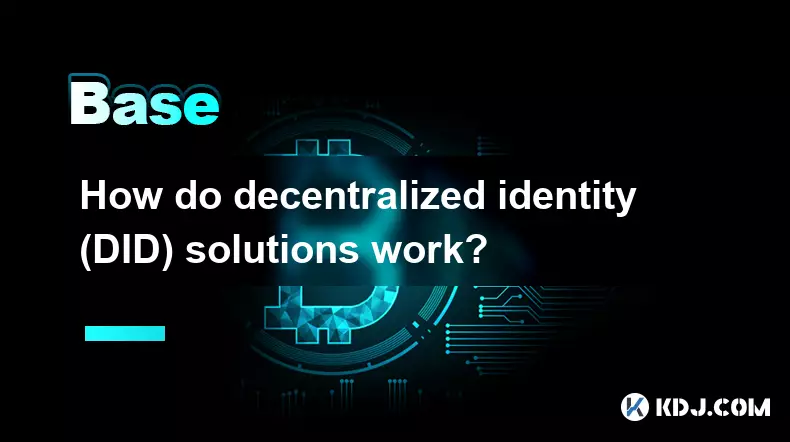
How do decentralized identity (DID) solutions work?
Oct 14,2025 at 11:36pm
Understanding Decentralized Identity in the Blockchain Ecosystem1. Decentralized identity (DID) solutions are built on blockchain networks, allowing i...

What is the difference between Near Protocol and Ethereum?
Oct 15,2025 at 08:01am
Near Protocol and Ethereum: Core Architectural Differences1. Near Protocol operates on a sharded blockchain architecture known as Nightshade, which al...
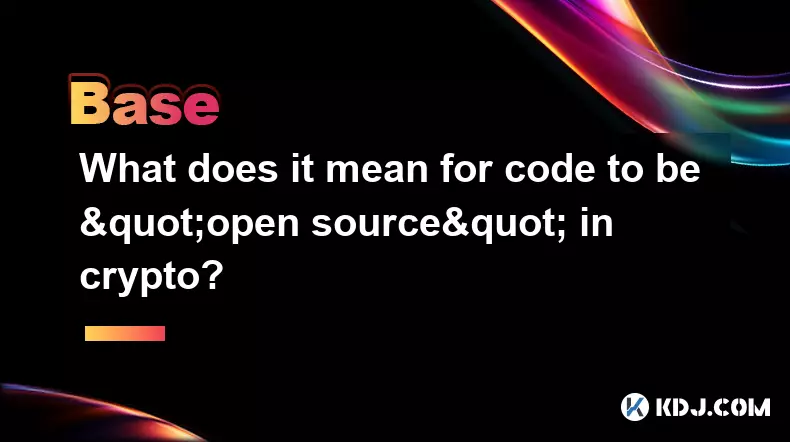
What does it mean for code to be "open source" in crypto?
Oct 12,2025 at 01:54pm
Understanding Open Source in the Cryptocurrency Ecosystem1. In the context of cryptocurrency, open source refers to software whose code is publicly ac...

What is the purpose of a "testnet"?
Oct 12,2025 at 09:01am
Understanding the Role of Testnets in Blockchain Development1. A testnet serves as a parallel version of a blockchain network, designed specifically f...

How to avoid phishing scams in crypto?
Oct 13,2025 at 06:18pm
Understanding Common Crypto Phishing Tactics1. Cybercriminals frequently use fake websites that mirror legitimate crypto exchanges or wallet platforms...
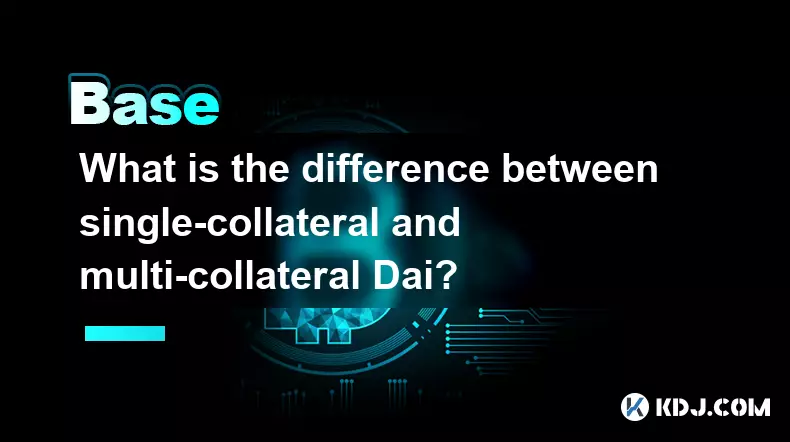
What is the difference between single-collateral and multi-collateral Dai?
Oct 12,2025 at 05:18pm
Understanding Single-Collateral Dai1. Single-Collateral Dai (SCD) was the original version of the Dai stablecoin launched by MakerDAO in 2017. It allo...

How do decentralized identity (DID) solutions work?
Oct 14,2025 at 11:36pm
Understanding Decentralized Identity in the Blockchain Ecosystem1. Decentralized identity (DID) solutions are built on blockchain networks, allowing i...

What is the difference between Near Protocol and Ethereum?
Oct 15,2025 at 08:01am
Near Protocol and Ethereum: Core Architectural Differences1. Near Protocol operates on a sharded blockchain architecture known as Nightshade, which al...

What does it mean for code to be "open source" in crypto?
Oct 12,2025 at 01:54pm
Understanding Open Source in the Cryptocurrency Ecosystem1. In the context of cryptocurrency, open source refers to software whose code is publicly ac...

What is the purpose of a "testnet"?
Oct 12,2025 at 09:01am
Understanding the Role of Testnets in Blockchain Development1. A testnet serves as a parallel version of a blockchain network, designed specifically f...

How to avoid phishing scams in crypto?
Oct 13,2025 at 06:18pm
Understanding Common Crypto Phishing Tactics1. Cybercriminals frequently use fake websites that mirror legitimate crypto exchanges or wallet platforms...

What is the difference between single-collateral and multi-collateral Dai?
Oct 12,2025 at 05:18pm
Understanding Single-Collateral Dai1. Single-Collateral Dai (SCD) was the original version of the Dai stablecoin launched by MakerDAO in 2017. It allo...
See all articles





















